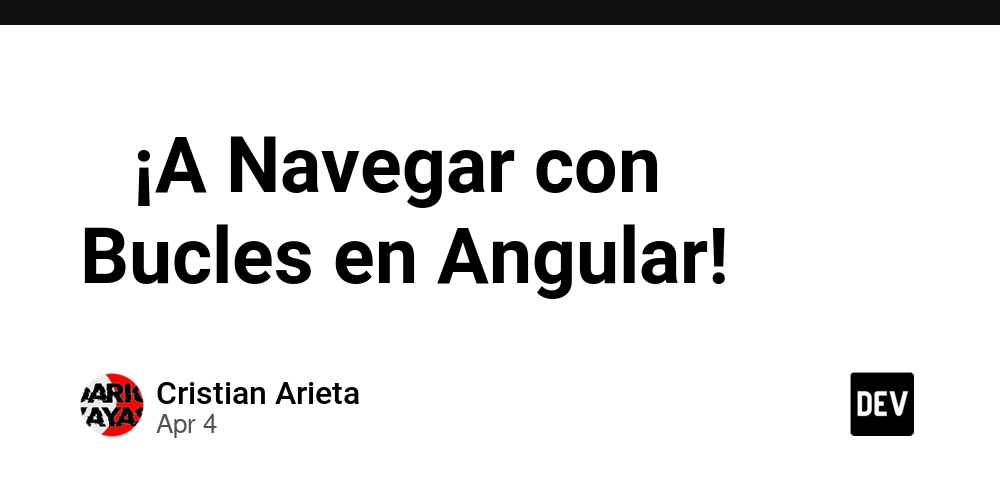Tutorial 16: Parsing JSON with Codable and Decodable in Swift
Introduction JSON (JavaScript Object Notation) is a lightweight data-interchange format widely used in APIs and web services. Swift provides the Codable protocol, which makes it easy to decode JSON into Swift structures and encode Swift objects back to JSON. In this tutorial, we will build a simple Weather App that fetches real-time weather data using URLSession, parses the JSON response using Codable, and displays the weather information in a SwiftUI interface. By the end, you will understand how to work with JSON in Swift and apply best practices for error handling and asynchronous API calls. Understanding Codable and Decodable Swift provides two protocols: Decodable: Allows decoding JSON into Swift objects. Encodable: Allows encoding Swift objects into JSON. Codable: A typealias for both Encodable and Decodable. Example of a JSON response for Weather Data Here’s an example JSON response from a weather API: { "location": { "name": "New York", "region": "New York", "country": "USA" }, "current": { "temperature": 22, "condition": { "text": "Sunny", "icon": "//cdn.weatherapi.com/weather/64x64/day/113.png" } } } We will map this JSON response to Swift structs using Codable. Step 1: Define the Data Models To parse the JSON, we define Swift structures that conform to Codable. struct WeatherResponse: Codable { let location: Location let current: CurrentWeather } struct Location: Codable { let name: String let region: String let country: String } struct CurrentWeather: Codable { let temperature: Int let condition: WeatherCondition } struct WeatherCondition: Codable { let text: String let icon: String } Step 2: Fetch Weather Data from API We will use URLSession to make a network request to fetch the weather data. import Foundation class WeatherService { func fetchWeather(for city: String, completion: @escaping (WeatherResponse?) -> Void) { let urlString = "https://api.weatherapi.com/v1/current.json?key=YOUR_API_KEY&q=\(city)" guard let url = URL(string: urlString) else { return } URLSession.shared.dataTask(with: url) { data, response, error in guard let data = data, error == nil else { completion(nil) return } do { let weather = try JSONDecoder().decode(WeatherResponse.self, from: data) DispatchQueue.main.async { completion(weather) } } catch { print("Failed to decode JSON: \(error)") completion(nil) } }.resume() } } Step 3: Build a SwiftUI Weather App Now, we will use SwiftUI to display the weather data. import SwiftUI struct ContentView: View { @State private var weather: WeatherResponse? private let weatherService = WeatherService() var body: some View { VStack { if let weather = weather { Text(weather.location.name) .font(.largeTitle) Text("\(weather.current.temperature)°C") .font(.system(size: 50)) Text(weather.current.condition.text) .font(.title2) AsyncImage(url: URL(string: "https:\(weather.current.condition.icon)")) } else { Text("Fetching Weather...") .onAppear { weatherService.fetchWeather(for: "New York") { response in self.weather = response } } } } } } Step 4: Handling Errors Gracefully To improve the user experience, let's handle errors properly and provide UI feedback. enum WeatherError: Error { case invalidURL, requestFailed, decodingFailed } class ImprovedWeatherService { func fetchWeather(for city: String, completion: @escaping (Result) -> Void) { let urlString = "https://api.weatherapi.com/v1/current.json?key=YOUR_API_KEY&q=\(city)" guard let url = URL(string: urlString) else { completion(.failure(.invalidURL)) return } URLSession.shared.dataTask(with: url) { data, response, error in guard let data = data, error == nil else { completion(.failure(.requestFailed)) return } do { let weather = try JSONDecoder().decode(WeatherResponse.self, from: data) DispatchQueue.main.async { completion(.success(weather)) } } catch { completion(.failure(.decodingFailed)) } }.resume() } } Step 5: Enhance UI with Loading State and Err

Introduction
JSON (JavaScript Object Notation) is a lightweight data-interchange format widely used in APIs and web services. Swift provides the Codable protocol, which makes it easy to decode JSON into Swift structures and encode Swift objects back to JSON.
In this tutorial, we will build a simple Weather App that fetches real-time weather data using URLSession, parses the JSON response using Codable, and displays the weather information in a SwiftUI interface. By the end, you will understand how to work with JSON in Swift and apply best practices for error handling and asynchronous API calls.
Understanding Codable and Decodable
Swift provides two protocols:
- Decodable: Allows decoding JSON into Swift objects.
- Encodable: Allows encoding Swift objects into JSON.
-
Codable: A typealias for both
EncodableandDecodable.
Example of a JSON response for Weather Data
Here’s an example JSON response from a weather API:
{
"location": {
"name": "New York",
"region": "New York",
"country": "USA"
},
"current": {
"temperature": 22,
"condition": {
"text": "Sunny",
"icon": "//cdn.weatherapi.com/weather/64x64/day/113.png"
}
}
}
We will map this JSON response to Swift structs using Codable.
Step 1: Define the Data Models
To parse the JSON, we define Swift structures that conform to Codable.
struct WeatherResponse: Codable {
let location: Location
let current: CurrentWeather
}
struct Location: Codable {
let name: String
let region: String
let country: String
}
struct CurrentWeather: Codable {
let temperature: Int
let condition: WeatherCondition
}
struct WeatherCondition: Codable {
let text: String
let icon: String
}
Step 2: Fetch Weather Data from API
We will use URLSession to make a network request to fetch the weather data.
import Foundation
class WeatherService {
func fetchWeather(for city: String, completion: @escaping (WeatherResponse?) -> Void) {
let urlString = "https://api.weatherapi.com/v1/current.json?key=YOUR_API_KEY&q=\(city)"
guard let url = URL(string: urlString) else { return }
URLSession.shared.dataTask(with: url) { data, response, error in
guard let data = data, error == nil else {
completion(nil)
return
}
do {
let weather = try JSONDecoder().decode(WeatherResponse.self, from: data)
DispatchQueue.main.async {
completion(weather)
}
} catch {
print("Failed to decode JSON: \(error)")
completion(nil)
}
}.resume()
}
}
Step 3: Build a SwiftUI Weather App
Now, we will use SwiftUI to display the weather data.
import SwiftUI
struct ContentView: View {
@State private var weather: WeatherResponse?
private let weatherService = WeatherService()
var body: some View {
VStack {
if let weather = weather {
Text(weather.location.name)
.font(.largeTitle)
Text("\(weather.current.temperature)°C")
.font(.system(size: 50))
Text(weather.current.condition.text)
.font(.title2)
AsyncImage(url: URL(string: "https:\(weather.current.condition.icon)"))
} else {
Text("Fetching Weather...")
.onAppear {
weatherService.fetchWeather(for: "New York") { response in
self.weather = response
}
}
}
}
}
}
Step 4: Handling Errors Gracefully
To improve the user experience, let's handle errors properly and provide UI feedback.
enum WeatherError: Error {
case invalidURL, requestFailed, decodingFailed
}
class ImprovedWeatherService {
func fetchWeather(for city: String, completion: @escaping (Result<WeatherResponse, WeatherError>) -> Void) {
let urlString = "https://api.weatherapi.com/v1/current.json?key=YOUR_API_KEY&q=\(city)"
guard let url = URL(string: urlString) else {
completion(.failure(.invalidURL))
return
}
URLSession.shared.dataTask(with: url) { data, response, error in
guard let data = data, error == nil else {
completion(.failure(.requestFailed))
return
}
do {
let weather = try JSONDecoder().decode(WeatherResponse.self, from: data)
DispatchQueue.main.async {
completion(.success(weather))
}
} catch {
completion(.failure(.decodingFailed))
}
}.resume()
}
}
Step 5: Enhance UI with Loading State and Error Messages
struct EnhancedWeatherView: View {
@State private var weather: WeatherResponse?
@State private var errorMessage: String?
private let weatherService = ImprovedWeatherService()
var body: some View {
VStack {
if let weather = weather {
Text(weather.location.name)
.font(.largeTitle)
Text("\(weather.current.temperature)°C")
.font(.system(size: 50))
Text(weather.current.condition.text)
.font(.title2)
AsyncImage(url: URL(string: "https:\(weather.current.condition.icon)"))
} else if let errorMessage = errorMessage {
Text(errorMessage)
.foregroundColor(.red)
.padding()
} else {
ProgressView("Fetching Weather...")
.onAppear {
weatherService.fetchWeather(for: "New York") { result in
switch result {
case .success(let weatherData):
self.weather = weatherData
case .failure(let error):
self.errorMessage = "Error: \(error)"
}
}
}
}
}
}
}
Conclusion
In this tutorial, we covered:
- Understanding
CodableandDecodable - Fetching JSON data using
URLSession - Parsing JSON into Swift structures
- Handling errors gracefully
- Displaying data in a SwiftUI interface
With these skills, you can work with any JSON-based API and build powerful iOS apps.











































































